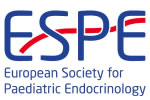hrp0082p1-d3-131 | Fat Metabolism & Obesity (2) | ESPE2014
Under-Diagnosed Beckwith–Wiedemann Syndrome Among Early-Onset Obese Children
Martos-Moreno Gabriel A , Serra-Juhe Clara , Perez-Jurado Luis A , Argente Jesus
hrp0094p1-118 | Fat, Metabolism and Obesity B | ESPE2021
Rare heterozygous variants in genes of the leptin-melanocortin satiety pathway contribute to childhood obesity
Martos-Moreno Gabriel A. , Garcia-Rastrilla Rut , Martin-Rivada Alvaro , Perez-Jurado Luis A. , Argente Jesus ,
hrp0089fc6.4 | Fat, Metabolism and obesity | ESPE2018
Identification of the First Obesity-Associated Mutations in Human Mesoderm-Specific Transcript (MEST) Result in Protein Overexpression, Adipocyte Hypertrophy and a Reduction in Adipocyte Mitochondrial Area
Suarez Juan , Martos-Moreno Gabriel , Rivera Patricia , Serra-Juhe Clara , Chowen Julie , Perez-Jurado Luis , Argente Jesus
hrp0082p1-d1-111 | Fat Metabolism & Obesity | ESPE2014
A Multiplatform Non-targeted Metabolomics Approach to Investigate Insulin Resistance Associated to Obesity in Childhood
Mastrangelo Annalaura , Martos-Moreno Gabriel , Garcia Antonia , Ruperez Francisco , Chowen Julie , Perez-Jurado Luis , Barbas Coral , Argente Jesus
hrp0089p1-p145 | GH & IGFs P1 | ESPE2018
Response to Growth Hormone in Patients with Isolated Familial Growth Hormone Deficiency due to RNPC3 Mutations
Travieso-Suarez Lourdes , Martos-Moreno Gabriel , Pozo Jesus , Munoz-Calvo Maria , Chowen Julie , Frilander Mikko , Perez-Jurado Luis , Hawkins Federico , Argente Jesus
hrp0086fc4.1 | Pathophysiology of Obesity | ESPE2016
Contribution of Rare CNVs and Point Mutations to the Etiology of Severe Early-onset Obesity
Serra-Juhe Clara , Martos-Moreno Gabriel A , Bou Francesc , Flores Raquel , Rodriguez-Santiago Benjamin , Gonzalez Juan R , Argente Jesus , Perez-Jurado Luis A
hrp0084ha2 | A New Syndrome Associated with Mutations in the Gene for Pregnancy-Associated Plasma Protein A2 (PAPP-A2) | ESPE2015
A New Syndrome Associated with Mutations in the Gene for Pregnancy-Associated Plasma Protein A2 (PAPP-A2) Causing Proportionate Short Stature, High Circulating IGF-I, IGFBP-3, and ALS, Mild Microcephaly, thin Long Bones and Decreased Bone Mineral Density in two Unrelated Families
Dauber Andrew , Munoz-Calvo Maria T , Barrios Vicente , Desikan Vardhini , Pozo Jesus , Muzumdar Radhika , Martos-Moreno Gabriel A , Hawkins Federico , Domene Horacio , Jasper Hector G , Kloverpris Soren , Yakar Shoshana , Conover Cheryl A , Kopchick John J , Hwa Vivian , Chowen Julie A , Oxvig Claus , Rosenfeld Ron G , Perez-Jurado Luis A , Argente Jesus



